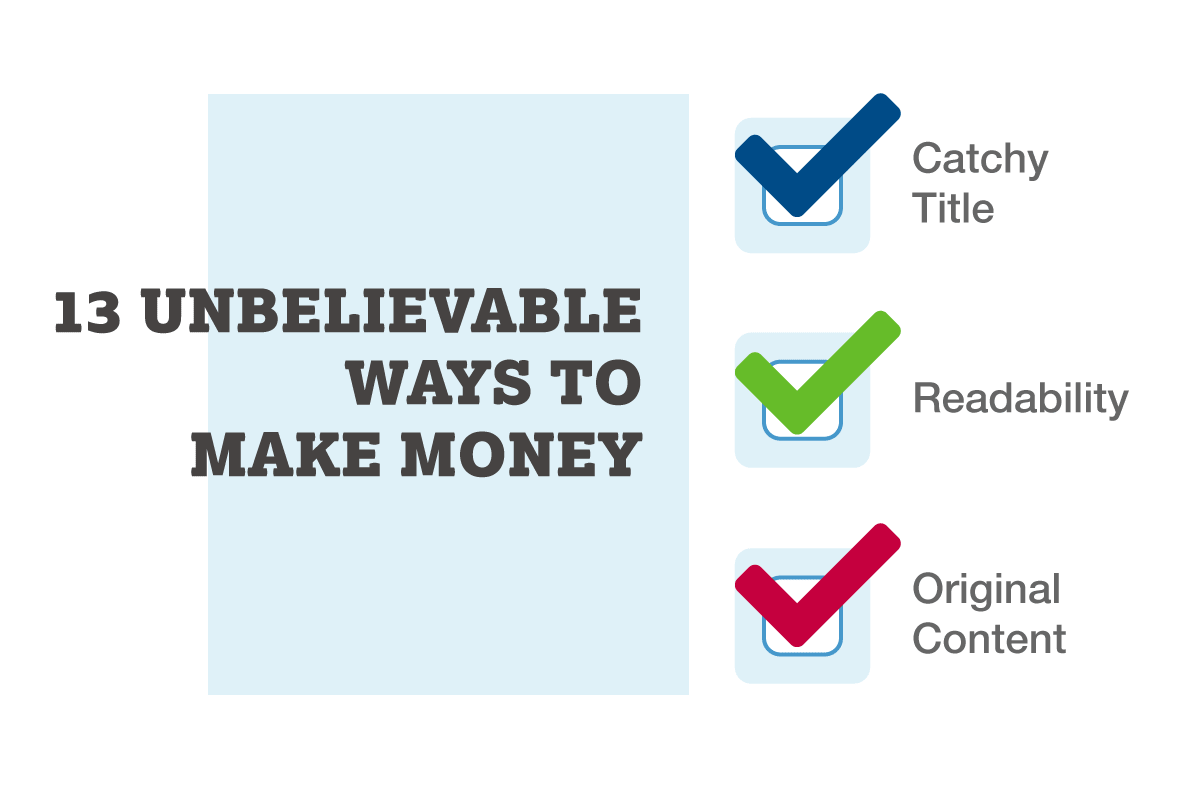Free Content-Checking Tools to Make Your Content 100% Better

Is your marketing content excellent, good, or substandard? How do you tell?
Content can be subjective, but that doesn’t mean there’s no way to evaluate it for quality and effectiveness. There are plenty of tools that can tell you how well your content is working for your target audience and how it can be improved.
Not only can the following content-checking tools make your writing better, all of them are free to use and do not require you to set up an account or provide contact information.
Titles & Headlines
Are your blog and article titles doing all they can to grab the attention of your target audience? Use these tools to measure the effectiveness of your titles and get suggestions for improvement.
Sharethrough’s headline analyzer is meant for ads, but it’s useful for all types of content. The tool scores your headline from 1–100 based on more than 300 variables, with a list of strengths and suggestions. It also offers separate scores for engagement and impressions.

Not sure how to capitalize your blog title? Title Case Converter lets you enter a title and see which words should be capitalized using several different styles, including AP, APA, Chicago, and The New York Times. You can opt to see suggested changes highlighted and get explanations for why each word is capitalized or lowercased. The site also provides an overview of capitalization rules and key differences between styles.
One of the best ways to grab the attention of your readers is by evoking emotion. The Emotional Value Headline Analyzer lets you enter a headline and select an industry category, then gives your headline an EMV (Emotion Marketing Value) score that shows the percentage of emotional words it contains. It will also tell you whether the emotional words in your title will appeal to people intellectually, spiritually, or empathetically.
Readability
Is your content easy to read and written at the right reading level for your target audience?
Check the readability of your content with the Automatic Readability Checker. Just enter a block of text (the recommended amount is 200–600 words but it will accept up to 3,000) to see how your content scores with eight readability formulas (Automated Readability Index, Flesch Reading Ease, Gunning Fog Scale, etc.), plus a consensus result that tells you the grade level, reading level, and reader’s age your content matches.
The Readability Analyzer works in much the same way, though in addition to copying and pasting text, you can also upload a file to be analyzed. The site delivers readability scores using six readability formulas, as well as statistics including average words per sentence, characters per word, and percentage of difficult words. The Paragraph Level readability tab lets you look at the readability of each paragraph in your supplied content, including readability scores and explanations.
If you’re looking for specific help to fix readability issues, Readable not only grades readability but also highlights problematic passages in your content. Moving your cursor over the content will generate pop-up notes telling you the issue, such as sentences that are too long, grammar issues, and spelling mistakes.
Duplicate Content
Original content belongs to its creator, so it’s important to make sure of two things: that the content on your site is unique and that no one is using your content on their own site without permission.
Plagiarism Checker lets you copy and paste a block of text (up to 1,000 words) into a search box or upload a document and search for duplicate content. The tool shows you what percentage of your content is unique, and notates which parts of the text are original and which are duplicate (if any). For any content marked plagiarized, you can click to see the source of the duplicate content. If you are checking published content on your own site, be sure to exclude your own URL from the search.
With Dupli Checker, you enter a maximum of 1,000 words and the tool breaks the content down by sections and flags content that is as little as 10% similar, which can be helpful when finding duplicate content that has been slightly modified to escape detection.
Siteliner lets you scan your entire website for duplicate content. You can scan up to 250 pages for free, and the premium edition boosts that total to 25,000. Just enter a URL and you’ll have a full report in just a few minutes, including a breakdown of how many pages on your site are unique, duplicated, or “common.” Clicking on the “see your duplicate content” link gives you a comprehensive list of duplicate content, including the URL, the page title, and the match percentage. The report also includes some other helpful information, including how your pages compare with other sites in terms of page size, load time, links, and other factors.
AI
The use of artificial intelligence to develop content has exploded, and it can be difficult to determine whether content was created by a human or a machine. Fortunately, several free tools can help. Bear in mind, though, that like AI, these tools are new and still learning how to identify AI-generated content.
Scribbler's Free AI Detector lets you enter up to 500 words to see if the content was generated by ChatGPT or any other AI tool. After you enter text, a scale will tell you what percentage is AI-generated and what percentage is human-written.
The Copyleaks AI Content Detector gives you a more specific breakdown for up to 2,500 words of text, highlighting problematic text in red and providing a percentage of probability that the text is AI-generated.
GPTZero gives you an unlimited number of free content checks up to 5,000 words each and returns a percentage probability that the content was written by AI. In addition to the overall rating, it highlights portions of the text that are likely AI-generated.


